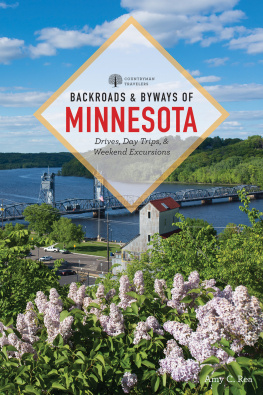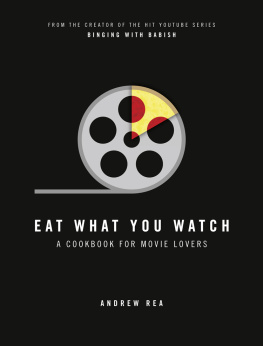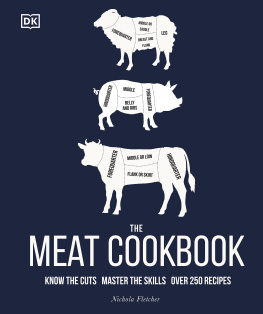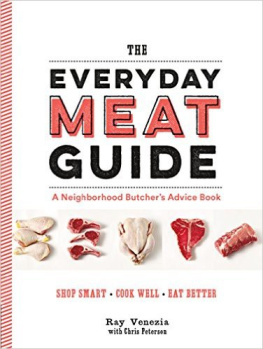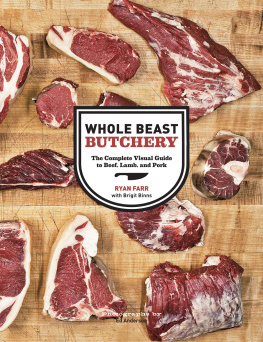
TOM REA
From OVEN-ROASTED TENDERLOIN to SLOW-ROASTED PULLED PORK SHOULDER to the SPIT-ROASTED WHOLE HOG

2013 by Quarry Books
Text 2013 Tom Rea
First published in the United States of America in 2013 by
Quarry Books, a member of
Quayside Publishing Group
100 Cummings Center
Suite 406-L
Beverly, Massachusetts 01915-6101
Telephone: (978) 282-9590
Fax: (978) 283-2742
www.quarrybooks.com
All rights reserved. No part of this book may be reproduced in any form without written permission of the copyright owners. All images in this book have been reproduced with the knowledge and prior consent of the artists concerned, and no responsibility is accepted by the producer, publisher, or printer for any infringement of copyright or otherwise, arising from the contents of this publication. Every effort has been made to ensure that credits accurately comply with information supplied. We apologize for any inaccuracies that may have occurred and will resolve inaccurate or missing information in a subsequent reprinting of the book.
Digital edition published in 2013
Digital Edition: 978-1-61058-770-9
Softcover Edition: 978-1-59253-787-7
Library of Congress Cataloging-in-Publication Data
Rea, Tom, 1985
How to roast a pig : from oven-roasted tenderloin to slow-roasted pork shoulder to the spit-roasted whole hog / Tom Rea.
pages cm
Includes index.
ISBN 978-1-59253-787-7
1. Cooking (Pork) 2. Roasting (Cooking) I. Title.
TX749.5.P67R395 2013
641.664--dc23
2012039054
Design: John Foster at badpeoplegoodthings.com
All photography by Natasha Bidgood with the exception of .
CONTENTS



Imagine the rich, evocative smell of roast pig hinting at the succulent pleasures to come; the crunch of perfectly cooked crackling; and, of course, the magical je ne sais quoi of bacon that tempts even the most stalwart vegetarian. Yes, theres no doubt that pork is the king of meats. Whether slow-roasted belly, pan-roasted pork chop, or the porky paradise of a whole hog, your nose knows when pork is roasting.
This book will teach you the basic roasting techniques in a chefs arsenaland honestly, they are simple to learn. However, unlike your average cookbook, How to Roast a Pig wont simply focus on individual recipes, but instead will help you understand different cooking techniques.
Each roasting technique will give you myriad recipes at your disposal with a small application of your imagination, allowing you to answer the ubiquitous dinner party question, Which cookbook is this from? with a true sense of pride as you say, Actually, I created it myself.
Each section starts with the basics, offering an in-depth, step-by-step recipe to produce a perfectly cooked piece of meat. All roasting techniques are accompanied by two everyday examples of how you can alter the cooking process to change the dish, plus one signature dish to wow your guests. Youll see how easy it is to extrapolate from your newly gleaned knowledge to create unique and tasty recipes of your owneven if you are using up leftovers.
Finally, well move on to the joy of the hog roast, covering both spit roasting and the mystical Caja China box. Whether you want to enjoy roast pork as an everyday meal or give it pride of place at a special occasion, How to Roast a Pig will make you king or queen of the pork dinner, and the envy of allespecially the guy or gal next door.
CHAPTER 1


I guess that if you have gotten this far, youre not just browsing in a bookstore and youve actually bought the bookamazing! Youre almost ready to start making everyone who lives downwind from you very hungry indeed. But, hold your horses; were not ready to cook quite yet. I know its tempting to leaf on to the recipes and jump straight in, but, as an older, wiser chef used to say to me, Fail to prepare, prepare to fail. First of all, you need to understand the pig.
The pig is one of the oldest forms of livestock, domesticated in 7000 BCE from indigenous wild pigs in the area that is modern-day China. The first pigs were brought to the United States by the Spanish in the mid-1500s.
Before the start of selective pig-breeding programs and en masse farming in the twentieth century, pigs were born in the spring, fattened during the summer, and slaughtered at the end of autumn. Due to the seasonal nature of the availability of pork coinciding with apples (harvested in late summer and autumn), a Western culinary tradition was born that still stands today. The year-round availability of meat and fruits has not diminished the popularity of this combination, showing that, If it aint broke, dont fix it.
The modern farmed pig is, to all intents and purposes, a man-made creation. This change occurred after World War II. Pig farmers at the end of World War II selectively bred pigs to meet the mass demand for flesh rather than the fat, creating the modern intensely farmed pig that we know today. They used the same natural selection process as Augustinian monk, Gregor Mendel, who between 1856 and 1863 selectively bred peas to show desired traits, becoming the father of the science of genetics.
PIG FACTS
Twenty-three percent of the worlds population doesnt eat pork for religious reasons, and thats before you add in those who dont eat meat and those who cant afford the luxury. Yet the worlds population eats 110 million tons (100 million metric tons) of pork a yearthe same weight as 274 Empire State Buildings worth of pork.
The United States slaughters approximately 1,200 pigs an hour.
The largest pig ever recorded, in 1933, was called Big Bill. Owned by Burford Butler of Jackson, Tennessee, he weighed 2,552 pounds (1157.5 kg) and was 5 feet (1.5 m) in length and 9 feet (2.7 m) high. Amazingly, he weighed three times as much as the aptly named Hogzilla.
Pigs are more intelligent than dogs and rank fourth on the list of intelligence behind chimpanzees, dolphins, and elephants.
Pigs feature extensively in art (which shows how much we love them). The earliest known picture of a pig is believed to have been painted 40,000 years ago in a cave in Altamira in Spain.
Pigasus the Immortal was the only pig (its debatable) to be put forward as a candidate for the presidency of the United States.
Selecting Good Pork
Now this is a difficult section for me. The farmers son in me wants to tell everyone to eat fantastic, naturally reared heirloom porkand honestly, it makes a difference. But the practical part of me knows that, especially when times are tough or you want to eat less fat, its not always possible. Here are four quick tips to help you assess the quality of pork you are buying.


